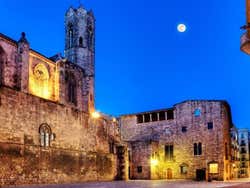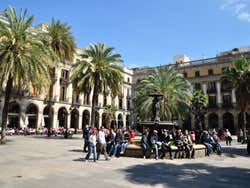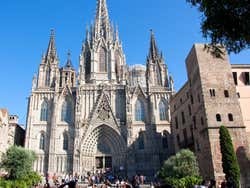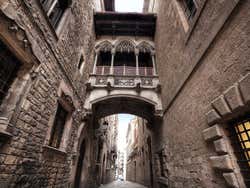
Gothic Quarter in Barcelona
Barcelona’s Gothic Quarter (Barri Gòtic) is situated in the district of Ciutat Vella. It is the center of the old town of Barcelona and is one of the most remarkable parts of the city.
The area stretches from Las Ramblas to Vía Laietana and from Passeig de Colom to the Plaça de Catalunya.
The present buildings sit on the former Roman settlement called Barcino. During the Medieval Ages, the city grew, constructing churches and Gothic palaces and destroying most of the Roman ruins.
The Gothic Quarter’s narrow and twisting medieval streets are the perfect scenery to explore the city center slowly, enjoying the architecture and the small local stores.
Things to do in the Gothic Quarter
Barcelona’s Gothic Quarter houses numerous tourist attractions, including:
- Barcelona Cathedral: The Cathedral of the Holy Cross and Saint Eulalia is a famous example of Catalan Gothic architecture. It was established during the fourteenth century.
- Plaça Sant Jaume: The city’s political center. It houses the City Hall and the Palace of the Generalitat.
- Carrer del Bisbe: Charming pedestrian street that connects Plaça Sant Jaume and the Cathedral.
- Plaça Reial: This surprising neoclassical square is one of the most charming and lively plazas in the city center.
- Plaça del Rei: The “King’s Square” houses numerous medieval buildings including the Palau Reial Major. The Barcelona City History Museum is also established in the square. It features interesting archaeological excavations that will allow visitors to discover the city since it was founded by the Romans in the first century BC up to the Middle Ages.
- Portal de L’Angel: It is one of the most prominent shopping streets in the city.
- Plaça Nova: Situated very near the Barcelona Cathedral, this charming square still preserves part of its old Roman towers.
- Museu Frederic Marès: Opened in part of the old Royal Palace of the Counts, it is a unique space where visitors will find a varied collection assembled by Frederic Marès, a Spanish sculptor.
- Jewish Quarter: Although the neighborhood known as El Call was abolished over 600 years ago, it is still possible to see some remains of how the Jewish Quarter used to be.




Transport
Metro: Jaume I, line 4; Liceu and Drassanes, line 3.
Nearby places
Plaça Sant Jaume (100 m) Museu d’Història de Barcelona MUHBA (111 m) Museu d’idees i invents de Barcelona (MIBA) (129 m) Museu Frederic Marès in Barcelona (132 m) Barcelona Cathedral (170 m)

